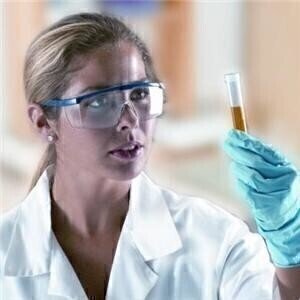News & Views
Pros and Cons of LC-MS
Jul 30 2014
LC-MS is an analytical technique that combines the ability of High Performance Liquid Chromatography (HPLC) to separate compounds in a sample, with the power of Mass Spectrometry as a detector. A brief introduction to the technique is given in the article: A Closer Look at LC-MS Basics.
Advantages of HPLC
In HPLC, compounds are separated based on their affinity for either the stationary or mobile phase. This results in the compounds travelling through the column at different rates, leading to different retention times for each constituent. Improvements in technology are increasing the separation of the constituents whilst reducing the overall analysis time.
HPLC Detectors
Detectors used with HPLC rely on one or more of the components’ properties such as fluorescence, electrical conductivity or ultra violet absorption. The identity of a substance is not confirmed directly. The components retention time is compared with a standard, and if it is the same then confidence in its identification is increased. The detectors can quantify the amount of a compound present based on the intensity and area of the measured peaks at identified retention times, as long as the peak is known to be pure.
Although HPLC offers good resolution, these detectors are limited in their ability to identify accurately and quantify compounds under certain circumstances; for example, if multiple compounds are insufficiently separated on the column. This circumstance may occur when searching for new drug metabolites whose properties are unknown, or when a compound has two isomers.
Mass Spectroscopy
Mass Spectroscopy is a very sensitive detection technique. Since MS determines the mass of each ion directly, it is a good technique for qualitative analysis. However, if multiple components have the same mass, it can be difficult to analyse fully the spectra and this is more likely to happen for a multicomponent sample than for a single chemical entity.
Benefits of LS-MS
By combining HPLC and MS the strengths of both techniques can be utilised. The HPLC separates a sample into its component compounds, which are then fed into a mass spectrometer, which produces spectra of the individual chemical entities. This data can be used to determine the molecular mass and structural information about the components in the sample.
A Step Further with LC-MS/MS
Structural isomers that are difficult to separate using HPLC can also be difficult to detect with MS. The ions generated for use in MS from structural isomers can be too similar to show differences in m/z ratios. One way of overcoming this problem is to use a technique known as LC-MS/MS, where after ionization for MS, some of the ions are further fragmented. This allows the detection of structurally related isomers.
Pros and Cons
LC-MS is an expensive option, both in terms of capital and running costs. The instrument requires skilled personnel to set it up. However, after training, it is relatively easy to operate on a daily basis. The ability to analyse a sample simultaneously for many compounds and the excellent data it can produce outweigh the high costs of its routine use.
Digital Edition
Lab Asia 31.2 April 2024
April 2024
In This Edition Chromatography Articles - Approaches to troubleshooting an SPE method for the analysis of oligonucleotides (pt i) - High-precision liquid flow processes demand full fluidic c...
View all digital editions
Events
Apr 22 2024 Marrakech, Morroco
Making Pharmaceuticals Exhibition & Conference
Apr 23 2024 Coventry, UK
Apr 23 2024 Kintex, South Korea
Apr 23 2024 Seoul, South Korea
Apr 24 2024 Jakarta, Indonesia




.jpg)













